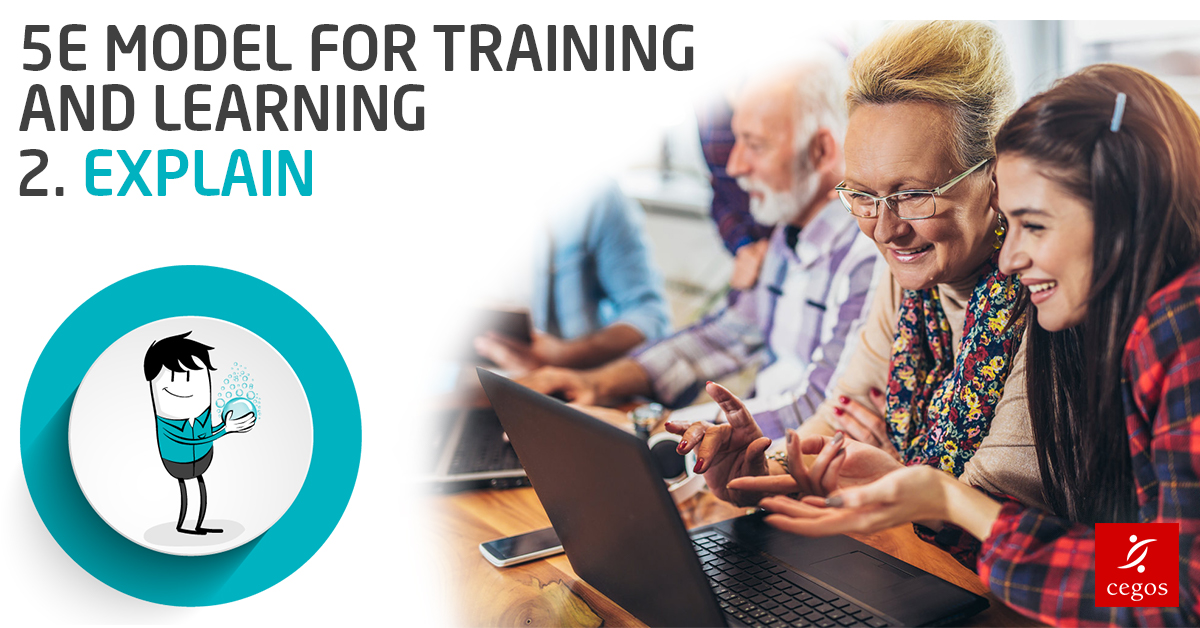5E model for training and learning – 2/ Explain

What neuroscience tells us about understanding
“Understanding is a matter of making connections with information we already know. The moment of understanding – often referred to as the ‘Eureka moment’ – happens when we piece together information which was once disparate to us. This requires our brain to make neural connections. Physiologically, understanding forms a new neural network.To understand, which literally means “stand in the midst of”, also means being able to reuse information in different situations. You must be able to activate knowledge, therefore understanding and memory are connected.” ** Source: Medjad, Gil, Lacroix. Neurolearning. Eyrolles 2017.

Facilitating the creation of links
I am training and I am accessing new ideas. The more I use my mind to interact with the learning content, the more I understand. Learning is a matter of going back and forth between the information I have access to and the understanding, representations, stored in my long-term memory.Creating links in this way plays a crucial role in understanding. Those links are absorbed into the working memory, which is limited and short-term in nature. It is therefore very important not to overload it and learn at your own pace.

Helping to provide context
Our brain is constantly processing a great deal of information, so it makes predictions using the recognition of patchy knowledge. A muzzle, a bit of an ear, a glimpse of a mane is all that is needed for the brain to infer the presence of a horse.To make these predictions, the brain groups everything it perceives into categories.Learning is all about categorising at an increasingly precise level.Explaining is therefore a matter of facilitating the categorisation of new information.Structure and prioritise content logically. Show content visually using a kind of tree structure (e.g., mind maps or diagrams). Highlight the relationships between different bits of information. Encourage learners to create their own diagrams and explanations.
Enabling understanding
Meaning lets us focus our attention, thereby facilitating the absorption of information and its encryption in the long-term memory.‘Explaining’ means to enable understanding in several different ways. Using varied registers will give the learner more means to reactivate the knowledge when they need it.Medjad, Gil and Lacroix, in their publication Neurolearning, (Eyrolles, 2017), propose three types of drivers:- semantic
- sensory: images, audio, as well as body movements, the physical environment, etc.
- emotional: surprise, staging, novelty, images, anecdotes, etc.
Ask participants to write what they have understood in their own words, or get them to explain what they have understood from diagrams and sketches. Make analogies, take participants on a journey using words (storytelling). Give participants the opportunity to move, handle and experience things, whilst articulating the feelings they are experiencing.
